Unmask These Awesome Purim Resources
Adult Education Department Update
by Sharoni Sibony
As we begin to emerge from our protective Covid caves, I’ve been thinking a lot about Purim. Two years ago, my shul’s Megillah reading was the last communal event that I attended, when people were already kind of eyeing each other nervously and wondering if we should actually have been gathered together. We’ve spent the past two years masking ourselves to protect each other, our eyes still darting about for the soulful connections we need with friends and strangers on the street. And now we have the opportunity to be together again for Purim in person at Temple.
We often use the occasion of Purim to play dress-up and to share facets of our identity or imagination that aren’t often on display for public view. Masks, costumes, and intoxication can reveal as much as we imagine that they hide, bringing some aspect of the self to the fore.
The Purim story turns on Esther, whose name is rooted in the Hebrew word “hester” or “hidden,” a figure whose donning and undonning of royal garments give her a chance to mask her identity (and likely her anxiety), and to play the political part of the representative of the Jews of Persia even before she herself feels comfortable in that role.
But it’s actually another moment in the Torah that I want to think about right now, as we approach Purim together. The Torah tells us that when Moses came down from Mount Sinai bearing the Torah tablets, the skin of his face was radiant, so much so that the Israelites shrank from coming near him. When he finishes relaying the Torah laws to them, he veils his face. And then the Torah tells us: “Whenever Moses went in before God to converse, he would leave the veil off until he came out; and when he came out and told the Israelites what he had been commanded, the Israelites would see how radiant the skin of Moses’ face was. Moses would then put the veil back over his face until he went in to speak with God” (Exodus 35: 34-35).
When does Moses wear this veil? It’s in the in-between moments, when he’s not directly interfacing with God or the Israelites, that he masks himself. For Moses, perhaps the veil offers the privacy he needs to relax into himself, out of his public prophetic role.
Perhaps you’ve become very comfortable at home over the past two years. Perhaps your front door acts like your own privacy veil, protecting you from the world and letting you relax (into daywear pyjamas?) in a way that you can’t always achieve in public.
But we’re here to welcome you back into being together. Because, as the great poet Rumi wrote:
Tear off the mask
Your face is
Glorious
For additional resources to deepen your Purim experience, I highly recommend checking out the videos at the Megillah Project. I particularly love Alicia Jo Rabins’ song for Vashti, and Aaron Koller’s intellectually creative and compelling case for a novel eastern Diasporic identity in the Megillah. Also, check out the materials on Sefaria, which could be adapted to your family celebrations if you want to blend some text study with mask-making or other activities for kids. And finally, Reform Judaism has thought-provoking explanations of customs and celebrations that will help you contextualize why you do what you do.
I’d love to hear from you about your favourite Jewish enrichment resources – websites, organizations, and more that you love to consult for insights and ideas.





Leave a Reply
Want to join the discussion?Feel free to contribute!